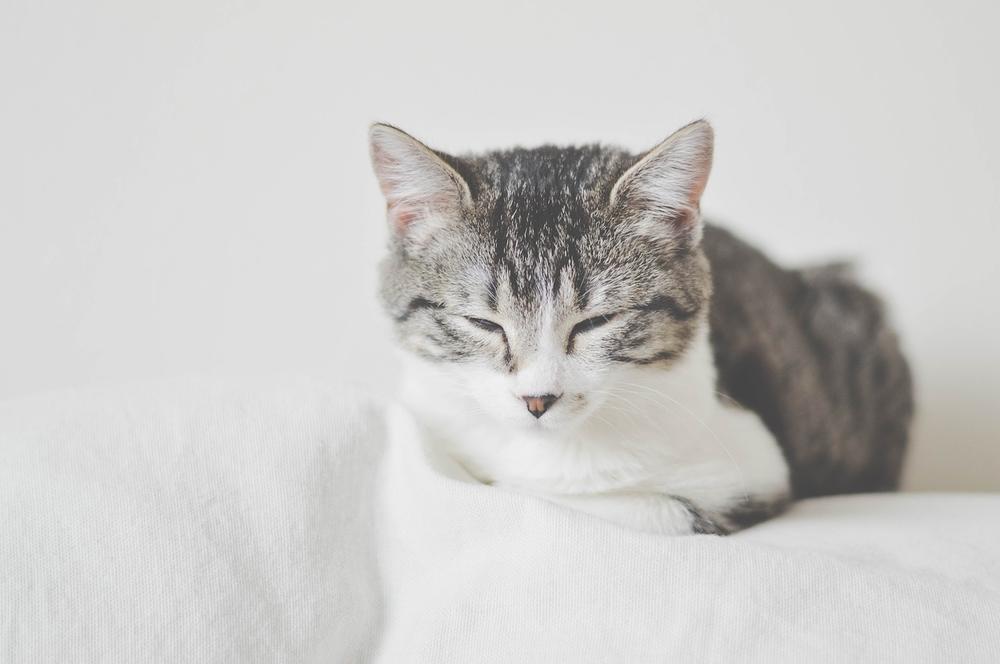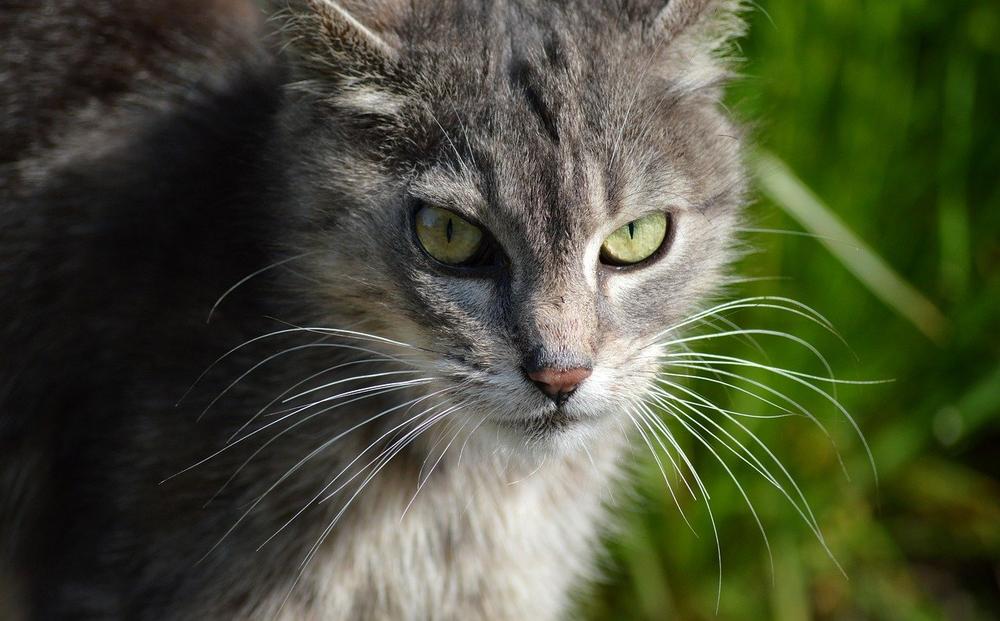How Cold Is TOO COLD for Cats? Responsible Owner's Reponse

Brrr!
Are you freezing your tail off wondering how cold is too cold for your beloved feline friend?
Worried about their safety in chilly weather?
I get it.
I mean, who wants their fur baby shivering like a popsicle? ❄
Let's uncover the truth and put your worries to rest.
Ready?
Let's dive in.
What Temperature Is Too Cold for Cats?
I wanted to share with you some important information about how cold is too cold for cats to be outside.
It's a bit tricky because it depends on factors like breed, coat, age, health, and of course, the weather conditions you're dealing with.
But here's a general rule:
If it's too cold for you to be outside, then it's definitely too cold for your cat. You know how cats love to stay cozy and warm, just like you do.
Pay attention to their behavior.
If your cat starts seeking warm spots or curling up tightly, that's a sign that it might be getting too cold for them.
Here's an interesting fact:
Unlike us, cats can't easily adjust their body temperature.

They have a natural body temperature close to 100 degrees Fahrenheit.
So, they need some extra care in chilly weather.
If your furry friend has a short coat, no coat at all (like those hairless kitties), is old, a wee kitten, or facing health challenges, it's best to keep them indoors when the temperature drops below 7 degrees Celsius.
Now, let's talk about extended exposure to really low temperatures.
Anything below 45 degrees Fahrenheit can be harmful to cats. While they can tolerate temperatures between 45-104 degrees Fahrenheit, it's always better to err on the side of caution.
Every cat is different and unique, just like both of us.
Some cats may handle colder temperatures better than others, but it's still safer to avoid anything under 45 degrees for long periods of time.
So, ensure your furry pal is safe and snug when it gets cold outside.
Make sure they always have a warm place to snuggle up in. Take good care of your feline friend, and now we can move on to the next topic!
Main points I'll expand upon further down this article:
- Signs that your cat may be cold include shivering, weakness, lethargy, reduced appetite, and extreme discomfort.
- Cats can get cold faster and more often than humans.
- Cats can catch respiratory diseases and may sleep more during the cold season.
- Keeping cats warm outside is important to protect them from injury, illness, and parasites.
- Young and old cats are more at risk in cold weather due to their lower cold tolerance.
- Vaccinations against cat flu and caution with antifreeze are essential.
- Cats with arthritis may worsen in cold weather, but regular playtime can help.
- Adequate shelter, warm bedding, and safe locations are important for outdoor cats.
- Hairless cats may need sweaters and blankets, while indoor cats benefit from a warm and dry area.
- Cats are at risk of severe hypothermia and frostbite when exposed to cold temperatures.
Now, let's explore the fascinating ways cats naturally adapt to cold temperatures and discover some surprising tips that can help keep them warm and cozy...
How Do I Know if My Cat Is Cold?
Do you know how to tell if your cat is cold?
It can be a bit tricky, but cats are more sensitive to the cold than us humans.
Here's what to look out for:
- If your cat is hiding in strange places trying to stay warm, that's a clue.
- When cats get chilly, they tend to groom themselves less, so if their fur looks messy, it might be time to warm them up.
- Just like when we're cold, cats lose their appetite. If they're not finishing their food, they might need some extra warmth.
- If you notice your cat trembling or shivering, it's a clear sign that they're cold and trying to generate heat.
- Cold paws and ears mean your furry friend needs some cozy warming up.
Your cats rely on you to keep them safe and comfortable.

So, pay attention to these signs and make sure they stay warm during those chilly days.
And if you're wondering about your feline friend's cold nose, I have just the guide for you.
In my article, you'll find out the answer to the question that's been nagging at you.
So when you're ready to put your mind at ease, take a moment to check out Why Is My Cats Nose Cold and discover the truth behind this common concern.
Do Cats Get Cold in Winter?
Cats, even those with fur coats, feel the cold weather, and especially so for those with shorter hair or less body fat.
Just like humans with their pesky winter colds, cats can catch respiratory diseases too, such as the dreaded cat flu.
Little kittens are especially susceptible to these stubborn infections.
To make matters worse, our feline friends generally loathe the chilly grip of winter, leading them to indulge in longer snoozes during this season.
So, dear cat owners, keep a close eye on your furry companions when the temperature drops.
Ensure they have cozy spots and plenty of warmth to keep their delicate whiskers and purr-fect spirits intact.
And if you're particularly concerned about your pregnant cat's behavior during winter, I understand.
It's important to address any signs of excessive licking.
That's why I encourage you to learn more about the reasons behind it in my blog post Why Is My Pregnant Cat Licking Herself a Lot.
This informative guide sheds light on the subject, providing insights that will put your mind at ease.
Stay informed and keep your furry friend comfortable throughout these chilly months.
Keeping Cats Warm Outside in Cold Temperatures
Providing Outdoor Shelters for Cats in Cold Temperatures
When it's freezing outside, make sure your outdoor kitties have a warm and cozy spot to snuggle up.
You see, if they're left out in the cold, they can get hurt, sick, or covered in pests.
And we definitely don't want that to happen!
So here's what you need to do:
Insulate the shelters with straw or blankets
First things first, line the outdoor shelters with straw or blankets to keep out the chill.
It'll keep your little furry friends nice and toasty.
Keep cats indoors at night when temperatures drop
Listen up folks!
When the temperature takes a nosedive at night, bring those adorable cats of yours indoors.
It gets really chilly outside, and you don't want them shivering all night long, do you?
Oh, and don't forget to provide them with an indoor litter tray so they don't have to brave the freezing weather just to use the bathroom.
Protect young and old cats
Here's something critical to know:

Babies and elderly cats need extra care in the cold. Their little bodies can't handle low temperatures as well, and they don't have much fat to keep them warm.
So, make sure to bundle them up, keep their shots updated to protect against cat flu, be careful with antifreeze, and give them some fun playtime.
Also, watch their weight to ease any arthritis pain that might act up in cold weather.
These tips apply whether your cat is an outdoorsy adventurer or an indoor couch potato!
We want all our furry friends safe and snug, no matter where they prefer to hang out.
Now, here's the deal...
While we've covered how to keep cats warm outside in cold temperatures, you should understand just how perilous those low temperatures can be.
In the next section, we'll delve into the potential dangers that await our furry friends when exposed to the cold for extended periods.
Stay tuned to uncover the surprising risks and symptoms associated with hypothermia in cats...
Hypothermia in Cats
Hypothermia is a serious condition for cats.
Extended exposure to cold temperatures can cause hypothermia, even if it’s not extremely cold outside.
And cats that spend a lot of time outdoors, like those pesky little stray cats who roam the streets at night looking for food (I'm not judging), are more at risk.
When Kitty gets too cold, his body temperature drops dangerously low and it starts to affect important bodily functions.
The heart slows down. Blood flow is reduced. Breathing becomes shallow.
It’s like he turns into a cute little frozen statue.
And poor Kitty will start showing some alarming symptoms of hypothermia, such as shivering, lethargy, weakness, and feeling cool to the touch.
If you notice these signs, your immediate action is needed!
You don’t want Kitty turning into an icicle.
Now, let me drop some knowledge on you!
- Cats need to maintain a body temperature above 90 degrees Fahrenheit. Keep them cozy, people!
- In cases of suspected antifreeze poisoning (probably because cats have bad taste and end up licking it from the garage floor), go straight to the vet! Use antifreeze containing propylene glycol if possible.
- Just avoid the freezing cold altogether by keeping your cat indoors during very cold weather.
Cats might have nine lives, but they’re not immune to the cold! 😺
And that's not all you need to watch out for when it comes to your furry friend braving the cold!
But did you know there's another potential danger that can occur after exposure to extremely low temperatures?
It's something you might not even think about, but it can have serious consequences for your cat's well-being.
Let me shed some light on this hidden threat and arm you with the knowledge to keep your cat safe in the frigid weather.
Stay tuned!
Frostbite in Cats
Frostbite in cats can be real bad news when it's frigid out there.

Here's the lowdown on frostbite in cats, my friend:
- After your cat takes a trip outdoors in the Arctic tundra, make sure you check their ears, tail, and paws for any signs of frostbite. Look out for funky colors, swelling, or even ice forming.
- Cats with fluffier fur are more at risk of getting frostbite because their luscious mane might not keep them warm enough. So, when it's cold, keep an eye on these furry buddies of yours.
- Buckle up, pal, cause prevention is where it's at. Set up a cozy little zone indoors for your outdoor cat to snuggle in when it gets colder than Mr. Freeze's heart outside. And don't let them stay outside too long when hell really does freeze over.
- Look, if you think your cat has caught some frostbite, you better high-tail it to the vet pronto. Frostbite can mess up their tissues and cause all sorts of complications if left hanging.
- Whatever you do, don't whip out a heat gun and start thawing those frostbitten areas at home. Take things down a notch by using warm (not boiling lava hot) water or wrap your buddy in a toasty towel. But then hustle straight to that vet for help.
- In extreme cases, your vet may prescribe some pain meds and consider chopping off the affected area to save the rest from infection and major harm.
Listen, friend, cats need us to have their backs and give 'em a hand when it comes to staying safe from frostbite. So hop to it and shield 'em from freezing their whiskers off.
And that wraps up today's article.
If you wish to read more of my useful articles, I recommend you check out some of these: Why Is My Cat Shaking, Can Cats Eat Silverfish, Can I Use Baby Shampoo on My Cat, and Why Does My Cat Stick Their Tongue Out Sometimes
Talk soon,
-Sarah Davis